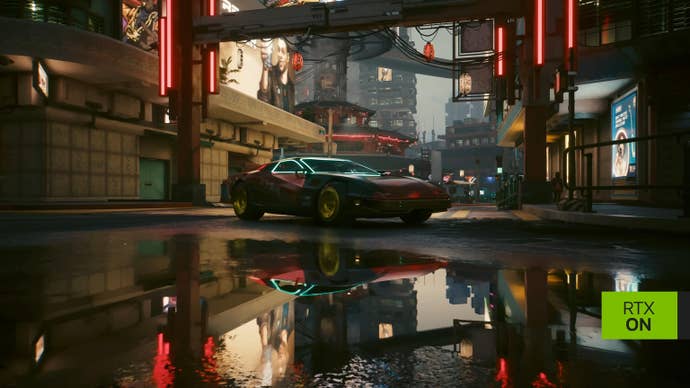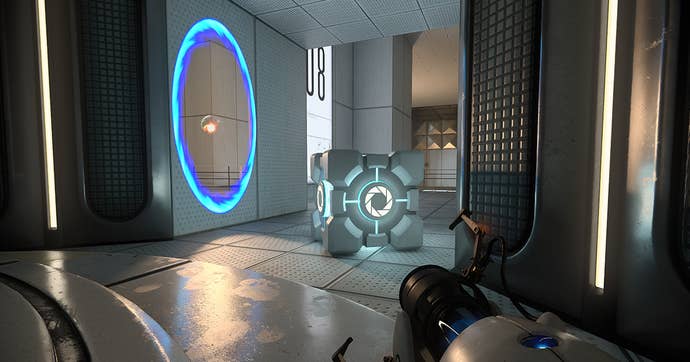Products You May Like
Every couple of years we get a new generation of graphics cards – but of course it’s only natural that not all cards, or even generations, are created equal. Nvidia’s 40-series of GPUs, designed with ray tracing, AI, and other such cutting-edge features in mind, impressed with performance but left brows furrowed on price.
In many ways, Nvidia’s mid-generation 40 series refresh is meant to fix all of that. Leading the charge is the RTX 4070 Super, which surpasses but doesn’t actually replace its direct predecessor.
The original 4070, which launched last year for $600, will remain on the market but take a subtle cut down to $550. The 4070 Super will launch into that old $600 price bracket, meaning those looking to buy a new graphics card at that budget here and now have a new option from Nvidia that offers 20% more cores and decently improved performance for the same price as you would’ve paid just nine months ago. On paper, that’s not a bad proposition.
In real-world conditions, testing a wide range of PC titles, the 4070 offers a 10-15% uplift over the vanilla 4070. If you want to compare it to the 4070 Ti, which in the initial release was the next bracket up, it lags behind by anywhere up to 20% depending on the title. So that improvement is there, it’s real, and it’s tangible – though obviously, the real target audience for the 4070 Super isn’t those who already own a 40 series card: it’s for those who skipped a generation or two out of a perceived lack of value. This is the primary market for a card like this.
In that category, the story is of a genuinely impressive upgrade. While game-dependent, running with a target resolution of 1440p I saw a broad improvement of around 50% when compared to the RTX 3070. Forza Horizon 5 on maxed settings jumps from around 95-100fps on the old card up to almost 150fps on the 4070 Super – and that’s without the support of DLSS3.
Hop to Cyberpunk 2077 and the story is similar with or without the AI-generated assistance – with ray tracing but without DLSS, Cyberpunk jumps from just scraping 30fps on the 3070 up to a good 50fps. Opt for DLSS and the previous-generation GPU delivers just shy of 60fps – but the 4070 Super manages well in excess of 85fps.
If you bring AMD into the mix, things become much less like-for-like, primarily down to the differences between Nvidia and AMD’s approaches to technology like supersampling (Nvidia’s DLSS vs AMD’s FSR) and ray tracing. Broadly speaking, Nvidia continues to have the edge on these sorts of features.
If we drop back to merely raw rasterization, the comparison between any member of the 40 series and an equivalent AMD card is way closer, and in terms of a bang-to-buck ratio often favours AMD. But factor in that additional technology and Nvidia begins to run away with it. The 4070 continues this trend. AMD’s Radeon RX 7800 XT has an RRP that’s $100 lower, for instance – but if you want ray tracing, the extra hundo is an absolute no-brainer comparatively speaking – even if it means saving for a little while longer before pulling the trigger.
All of these benchmarks are at 1440p, the resolution that Nvidia itself makes clear it designs its ‘70’ cards towards. While you could boost to 4K, the original 4070 was undeniably a 1440p card, and in performance terms, that remains the sweet spot even for this upgrade. If you want higher resolutions, you should ideally be gunning for an 80 – and if you’ve stumped up for a 4K PC monitor, you’re probably also the sort more likely to blow a heftier chunk of change on one of the higher-end cards.

When compared to its peers the 4070 Super does a pretty good job of standing up both in terms of performance and value, then. But the more complicated equation comes when you begin to consider the pricing of older-generation cards. You can no longer buy these cards, but if you’re aware of the pricing of the similarly-scoped RTX 3070 back in 2020, the pricing continues to sting. Consider, then, that this card is a little bit faster than an RTX 3080 – despite that card launching three years ago as a higher-end option… for only $50 more than the 4070 Super’s MSRP. This isn’t so much a mark against the 4070 Super as it is the direction of travel for price-to-performance ratios across the entire GPU segment – especially those from Nvidia.
The 4070 Super is, as a baseline, the graphics card that I expect most customers looking for an upgrade in this generation to end up with. Even the most cursory of glances at the Steam hardware survey reveals that 1080p remains the most popular resolution – but that 1440p is the growing standard that will inevitably replace it in years. 4K is nice for those who want to flex on the cutting edge – but this is where the market is. For that market, it’s a good card, at a decent value – even if I still pine for the pricing of a few years previous.
Back in 2019, the RTX 20 series of GPUs got its Super refresh – and that series of products felt like a bit of a mea culpa from Nvidia – understanding that the prices were overcooked on the initial release, especially compared to performance. In the end, the best cards to have in that generation were for the most part the Super versions – and this is probably going to be the case again with the 40 series. For those on a card that’s three-plus years old, this is a natural-feeling, decent-value upgrade. How good the value is overall remains to be seen, however – the full picture will emerge as the rest of the Super cards are tested.
